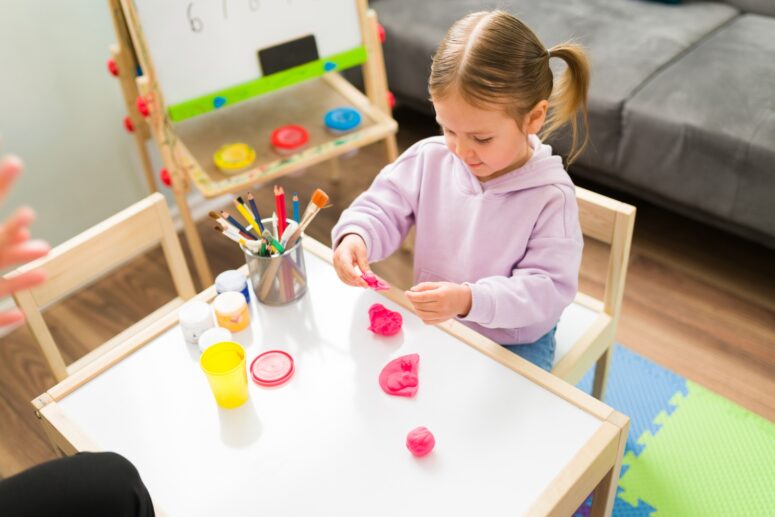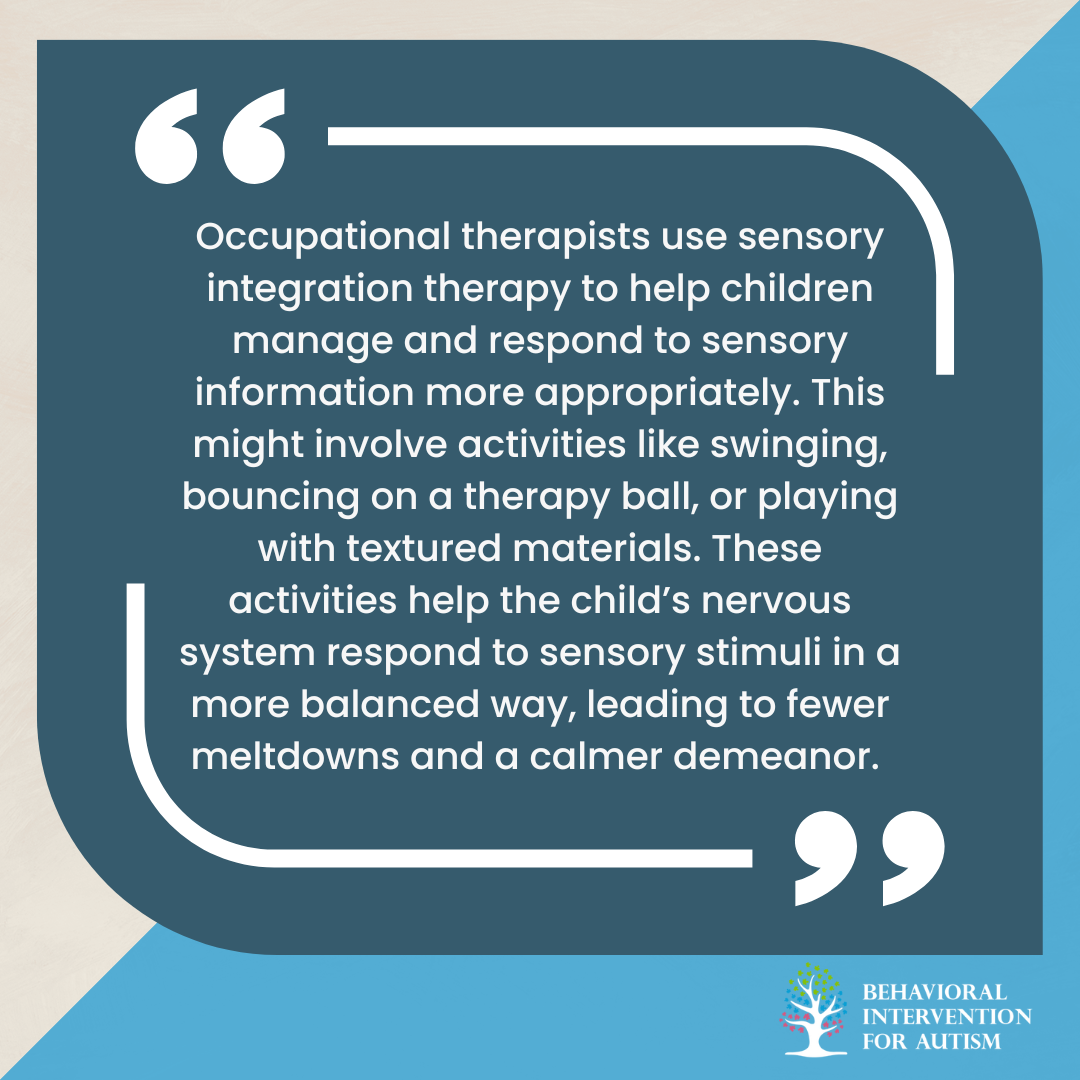
Table of Contents
Occupational therapy (OT) is a valuable intervention for individuals, especially children, with autism spectrum disorder. This therapeutic approach focuses on enhancing daily living skills, sensory processing, motor skills, and social interactions.
Let’s delve deeper into the benefits of occupational therapy for autistic individuals:
Daily Living Skills
Occupational therapy aids children with ASD in mastering everyday tasks such as dressing, eating, and personal hygiene. These tasks, known as Activities of Daily Living (ADLs), are essential for independence. Therapists employ techniques like visual schedules, which provide step-by-step instructions for each task.
This structured approach reduces anxiety and increases the child’s ability to complete these tasks independently. For instance, breaking down the task of brushing teeth into smaller, manageable steps can help a child learn and remember the process more effectively.
Sensory Processing
Children with ASD often experience sensory processing issues, where they may be overly sensitive (hypersensitive) or under-responsive (hyposensitive) to sensory inputs.
For example, a child who is hypersensitive to noise might use noise-canceling headphones or engage in calming deep-pressure activities to manage their sensitivity.
Motor Skills
Motor skills are often a challenge for children with ASD. Fine motor skills involve the use of small muscles, like those in the hands and fingers, while gross motor skills involve larger muscle groups used for activities like running and jumping.
Occupational therapists create individualized plans to improve these skills through play-based activities.
For example, using tweezers to pick up small objects can enhance fine motor skills, while navigating an obstacle course can improve balance and coordination. Strengthening these skills not only aids in physical development but also enhances self-esteem as children achieve new milestones.
Social Skills and Communication
Improving social skills and communication is a crucial part of occupational therapy. Children with ASD often find it challenging to interact with peers and understand social cues. Occupational therapists use various strategies such as role-playing, social stories, and group activities to teach these skills.
Role-playing involves acting out different scenarios to practice appropriate responses and behaviors, while social stories provide visual and written narratives to explain social situations and expected behaviors.
Group activities, like playing games with peers, offer real-life practice in a controlled environment. These techniques help children learn how to initiate conversations, share, take turns, and develop friendships.
Emotional Regulation
Emotional regulation is the ability to manage and respond to an emotional experience in an adaptive way. Children with ASD may have difficulty understanding and expressing their emotions, leading to frequent outbursts or meltdowns.
Occupational therapists teach children strategies to recognize their emotions and cope with them effectively. This might involve deep-breathing exercises, using a weighted blanket for calming, or creating a “calm down” corner with soothing activities.
These techniques help children learn how to self-soothe and reduce the intensity of their emotional reactions, leading to improved behavior and greater emotional stability.
Individualized and Family-Centered Approach
A significant strength of occupational therapy is its personalized nature. Therapists develop individualized intervention plans tailored to each child’s unique needs and strengths. They conduct thorough assessments to understand the child’s abilities, challenges, and interests.
Family involvement is also crucial; therapists educate and train parents and caregivers on how to support their child’s development at home. This might include setting up a structured routine, using visual supports, or implementing sensory strategies.
A collaborative approach ensures consistency and maximizes the child’s progress by reinforcing skills across different environments.
Enhanced Quality of Life
The overarching goal of occupational therapy is to enhance the quality of life for children with ASD and their families.
By improving functional skills, sensory processing, motor abilities, social interactions, and emotional regulation, children become more independent and capable of participating in everyday activities. This increased independence reduces the caregiving burden on families and allows children to engage more fully in school, community activities, and social interactions.
The confidence and self-esteem gained from mastering new skills also contribute to a more positive outlook and a higher overall quality of life.
Occupational therapy is a transformative intervention for children with autism. It addresses a wide range of challenges and equips children with the skills they need to navigate their world more effectively.
If you are considering occupational therapy for a child with ASD, consulting with a qualified occupational therapist can provide valuable insights and a tailored approach to meet your child’s unique needs.
At Behavioral Intervention for Autism, we offer high-quality ABA therapy in Florida and help equip parents with the knowledge they need to advocate for their child’s needs. Get in touch to learn more and start making a positive impact on your child’s development.
Sources:
https://cloudninetherapy.com.au/benefits-of-occupational-therapy-to-children-with-autism
- 9 Common Obsessions of Children With Autism You Should Know - February 25, 2025
- What is Neurodiversity? A Guide to Embracing Differences - February 25, 2025
- Understanding Hyperfocus in Autism: What It Means and Why It Happens - February 25, 2025



